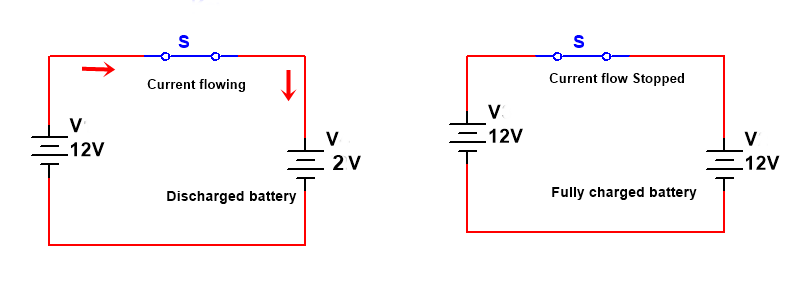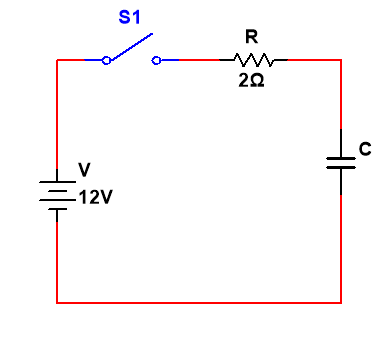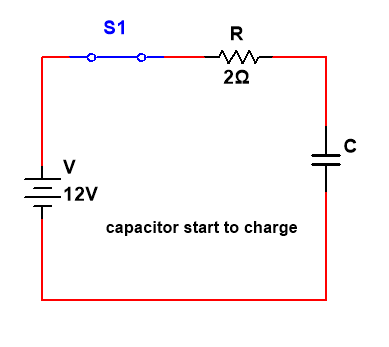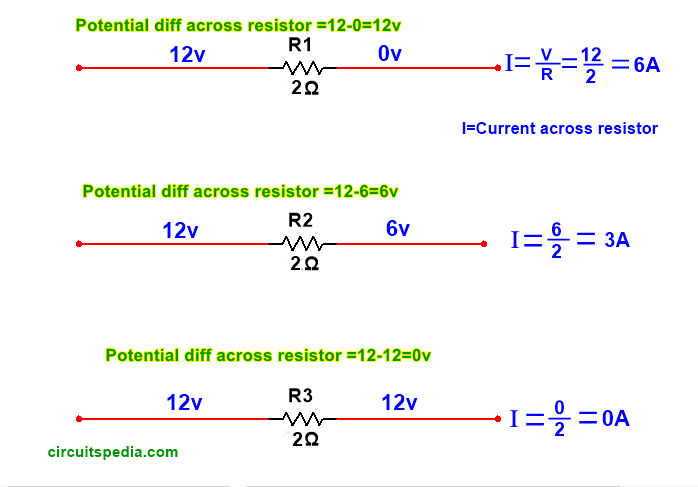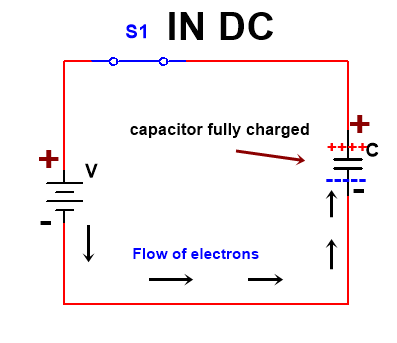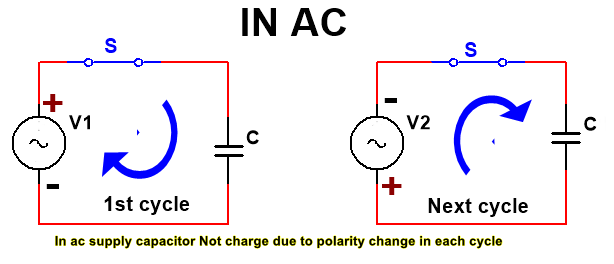Search the Community
Showing results for tags 'how capacitor block dc current'.
-
why ac current passes through capacitor but dc can’t how capacitor block dc current Explanation 1 We try to understand using a discharged battery in the circuit. When switch on, the battery is starting to charge and increasing the voltage level of the battery and there is a flow of current. When the battery gets fully charged and the voltage of a battery increase and is equal to supply voltage then there is no flow any current between them. Let us consider a simple circuit as given below. In this circuit, a capacitor is connected with a resistor in series. A 12v DC power supply is used. This circuit is open because the switch of this circuit is open. In the case of capacitor If I turn on the switch then what will happen? After the supply used in this by turning on the switch, the Capacitor will start to Charge and this capacitor will charge continuously till the voltage is equal to supply voltage. Here 12v used so capacitor is getting charged from 0v, 1v, 2v,3v,4v……….upto 12v. And when capacitor charged with 12v then it will stop to charge. If supply is used of 9v then the capacitor will stop to charge after 9v. Now, we take a look at the following diagrams. A resistor of 2 ohm is in the diagram and one side of the resistor is voltage is 12v and the other side is 0v. So here is the potential difference between two points is 12-0=12v. Means voltage across the resistor is 12v. So the current conduction is I=V/R=12/2=6A. If other side voltage increases and becomes 6V then the potential difference is 12v – 6v=6v means voltage across the resistor is 6v. The current conduction is I=V/R=6/2=3A. So we see here if the voltage at the two-point in the circuit has much differed then the potential difference between them is high means the voltage level is high and there is high current flow. But if the voltage at two points in a circuit is Similar then the potential difference between them is 0, so the voltage is 0 between those two points. In this case, the current flow is 0/2=0A, which means no current flows. The same phenomenon occurs with the Capacitor. At starting when the Capacitor starts to Charge from 0v, A current flows through the capacitor in the circuit. But after some time when the capacitor gets fully charged and the voltage level of capacitor increase maximum or equal to supply voltage, then there are 0 potential differences and then no current flows across a capacitor. In the diagram, we see that the voltage level is equal to both sides of the resistor after a full charge of the capacitor, so there are no current flows across the Capacitor because of the potential difference across it become 0v. Actually capacitor doesn’t block DC current, the capacitor makes potential difference high to very low (about 0) and stops the current flow between them at a particular portion of a circuit by itself charge. But we feel like the Capacitor block DC current. Explanation 2 When switch on supply then Electrons start stored in the Capacitor and after some moments capacitor gets charged by Electrons and positive ions. After charging the Capacitor Electrons are repelled by charged Electrons and then the capacitor works like an open circuit. As formula Xc=1/2πFC In DC there is no frequency so F=0. So Xc=1/0=∞.means there is very high resistance across the capacitor. So in dc capacitor acts as an open switch after charge. In AC current there is frequency. So continuous changes in polarity between negative and positive and this reason capacitor don’t get charged. In ac, the capacitor acts as a short circuit. As formula Xc=1/2πFC In AC always some value of F. So always a reactance creates across the capacitor that allows flowing the current. Also read- Thevenin theorem How does a Relay work Flip-Flops, S-R and J-K Flip flop .

.thumb.png.2654eb08e8864dfcee99bc0732f95fd2.png)
